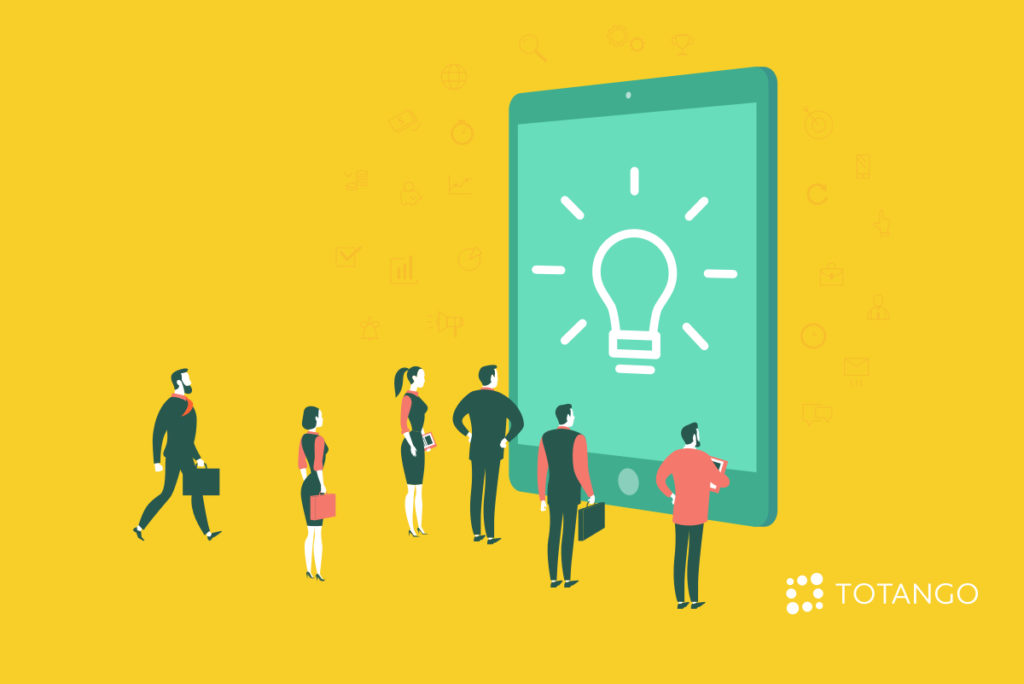For any business, the question of how to meet the needs of the client is front and center. After all, as the old adage goes, “The customer is always right.” However, in a world where Customer Success teams often have dozens of accounts to care for, it can be challenging to fully understand the specific needs of individual client accounts and to find time to reach out to each client to meet those needs.
Today, however, data-driven customer engagement software allows organizations to efficiently engage with clients in a way that is also personalized and valuable to the customer. Going beyond the simple tracking of analytics, data-based customer engagement enables companies to use customer data insights to categorize behavior patterns in order to solve problems, anticipate needs, and ultimately improve the customer relationship. As a result, businesses can build better client communication, create enticing offers for upsell opportunities, and meet overall business goals in a more reliable manner.
Engaging Customers, Both New and Established
Data-driven customer engagement enables companies to anticipate the needs of their clients, regardless of whether they are brand new sign-ons or have been with the organization for years. This data accumulation enables scalable customer communication that provides valuable and relevant content to the client. Today’s engagement software grows along with customers, aiding them in the initial steps of onboarding and adding value as they become more established users.
Onboarding Clients
When clients begin the onboarding process, customer engagement tends to revolve around ensuring that users are properly set up to use the product. Factors such as correct profile configuration, a basic understanding of functionalities, and the ability to find educational resources are key in these initial stages. Automating a personalized message from a Customer Success Manager to congratulate the client on completing the next step, or offering to explain how to move forward with onboarding are ways to engage the client in a more personal way.
Over time, as customers become more comfortable with the product and begin to use it, their behavior is logged and a more complete picture of their needs is formed. Informed by various key metrics including overall engagement score, usage frequency, time spent using the product, license utilization, and a record of escalations such as support tickets, companies are able to improve the user experience and accelerate time to value.
Established Clients
For clients past the onboarding stage, engagement focuses on ensuring smooth product adoption and adding value in order to improve renewal and expansion rates, for instance, by keeping customers up-to-date on features that might be of use. If there are issues with adoption, for example, if a client is not using the product regularly, a limited free trial of a new feature that offers a good fit for their industry could be offered. In other cases, links to webinars, product training videos, or an appointment time with a CSM for help going over a feature could be useful. This type of personalized, relevant engagement with customers drives adoption after onboarding and ultimately increases customer lifetime value.
How Data-Driven Customer Engagement Optimizes Your CS Team to Meet Client Needs
Data-driven customer engagement optimizes your CS teams to be as productive and effective as possible. As a way to proactively meet the unique needs of your clients, implementing data-driven, goal-based engagement software offers the following benefits:
1. High-Quality Communication Across the Client Spectrum
While certain high-profile clients benefit from a designated CSM and frequent one-on-one communication, maintaining this level of personalized communication is not scalable. It’s also difficult to keep up regular communication with low-touch customers to ensure they are reaching value as well. Digital engagement provides a solution to these issues by offering communications and assistance in a more scalable way. Further, as customers continue to use the product, customer success metrics such as time spent using the product, whether they are a daily, weekly, or monthly active user, and the number of open support tickets forms a real-time view of the client’s status. This all helps to coordinate the right message with the right value, for the right time.
2. More Time for High Impact Projects
By using a scaled digital engagement approach, a CSM’s time is freed up to work on high impact projects for clients or the business, while still maintaining quality communications with clients. Additionally, by tracking behaviors, analyzing data, and acting appropriately on that data, businesses can boost customer lifetime value through opportunities such as upsells or by implementing steps to prevent churn.
3. Improved Brand Consistency
By using digital outreach, your organization can have greater control over the tone and messaging used with clients. Just as organizations can ensure consistency in the messaging around company products, websites, and paid ads, data-driven communications empower businesses to craft campaigns that use consistent messaging, yet are personalized toward specific client groups. Based on their unique product usage, history, industry, and other characteristics, customers can be segmented into categories, allowing for engagements that are both timely and relevant, carrying the right message to help drive value. Customer segmentation allows for specific value propositions to be communicated to appropriate clients; for example, communications to a healthcare company may not be relevant to a financial company.
Explore How Data-Driven Customer Engagement Software Can Improve Your Enterprise
Using data-driven customer engagement software makes it possible to understand customer behavior in a way that lets you ensure your product is helping customers meet their business goals. By using customer success software that makes data easy to access and analyze, and that offers next steps for acting on that data, your CS team can be prepared to answer concerns, anticipate needs, and create value in the way that best suits each client’s unique industry and enterprise needs.
In these challenging times, you can’t afford to buy before you try. Get started for free today. Totango’s customer success platform enables a comprehensive understanding of your customer base, allowing you to deliver greater value throughout your engagements.

